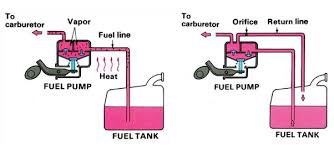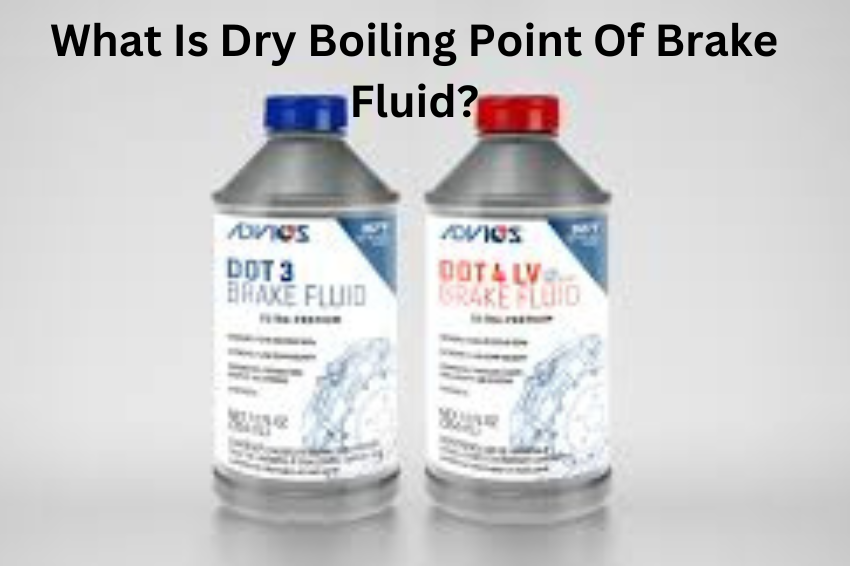What is the dry boiling point of brake fluid? It’s an essential factor in determining the safety and performance of your car’s braking system.
This guide will explain what it is, why it matters, and how it affects your vehicle.
What Is The Dry Boiling Point Of Brake Fluid?
Dry boiling point refers to the highest temperature that brake fluid can withstand before it vaporizes when it’s completely new and free of any contaminants like water.
This is different from the wet boiling point, which measures the same thing but when the fluid has absorbed moisture.
Think of brake fluid as the lifeblood of your car’s braking system.
It’s a hydraulic fluid that transmits pressure from the brake pedal to the calipers, which squeeze the brake pads against the rotors to slow or stop the car.
For this to work effectively, the brake fluid must remain in a liquid state.
If it boils and turns into a gas, it can cause the brakes to feel spongy or even fail completely.
This is why the dry boiling point of brake fluid is so important.
A high dry boiling point is essential for optimal brake performance, especially under demanding conditions like heavy braking, towing, or driving in hot weather.
It ensures that your brakes remain consistent and reliable, even when pushed to their limits.
However, the dry boiling point of brake fluid depends on its formulation.
Higher-quality brake fluids, like DOT 4 and DOT 5.1, generally have higher dry boiling points than DOT 3.
Yet, even the best brake fluid can be compromised if it becomes contaminated with water.
That’s why it’s important to maintain proper brake fluid levels and replace it according to the vehicle manufacturer’s recommendations.
Dry Vs Wet Boiling Point Of Brake Fluid
When we talk about the dry vs wet boiling point of brake fluid, we’re comparing two different measurements of how well your brake fluid can handle heat.
The dry boiling point is the temperature at which your brake fluid will start to boil when it’s completely new and free from any contaminants, like water. It’s a measure of the brake fluid’s pure heat resistance.
Wet boiling point is the temperature at which your brake fluid will boil when it has absorbed some water. Water can easily get into your brake fluid through tiny gaps in the brake system.
The difference between these two numbers is important because water dramatically lowers the boiling point of brake fluid.
This means your brakes can fail much sooner if your brake fluid is wet.
Imagine your brake fluid as a hero fighting off heat.
When it’s dry, it’s strong and can handle high temperatures.
But when it gets wet, it’s like the hero has a cold and can’t fight as hard.
This is why it’s essential to keep your brake fluid dry.
A high dry boiling point is paramount for overall brake performance, especially when you’re driving aggressively or towing heavy loads.
However, it’s the wet boiling point that truly indicates the real-world performance of your brake fluid.
To keep your brake fluid in top shape, we recommend you check its level regularly and replace it according to your car’s maintenance schedule.
You can also look for signs of water contamination, like brake fluid that looks cloudy or milky.
How Does Dry Boiling Point Affect Brake Performance?
The dry boiling point of your brake fluid directly impacts your car’s braking performance.
This is especially important under demanding driving conditions like heavy braking, towing, or mountain driving.
When you apply the brakes, the friction between the brake pads and rotors generates heat.
Then, this heat is transferred to the brake fluid.
If your brake fluid has a low dry boiling point, it can vaporize into a gas under this intense heat.
This process is known as vapor lock.

Vapor lock is a serious issue.
When brake fluid vaporizes, it creates compressible air bubbles in the brake lines.
These air bubbles reduce the pressure transmitted from the brake pedal to the calipers, making the brake pedal feel spongy and less responsive.
In severe cases, it can lead to complete brake failure.
This is often referred to as brake fade.
It’s when your brakes become less effective due to overheating.
Brake fade is a common issue on race tracks where cars are subjected to repeated hard braking.
However, it can also occur on public roads under extreme conditions.
A brake fluid with a high dry boiling point can better resist vaporization, maintaining hydraulic pressure and providing consistent braking power, even under extreme heat.
This is why high-performance cars often use brake fluids with higher boiling points.
A study by the SAE International (Society of Automotive Engineers) found that a decrease in brake fluid boiling point of just 20°C can lead to a significant reduction in braking efficiency.
This emphasizes the big role of high-boiling point brake fluid in ensuring safe and effective braking.
What Is The Dry Boiling Point Of DOT 3, DOT 4, And DOT 5 Brake Fluids?
The most common types of brake fluid are DOT 3, DOT 4, and DOT 5.
These designations represent specific performance standards set by the Department of Transportation (DOT).
| Brake Fluid Type | Dry Boiling Point (°C) |
| DOT 3 | 205-230 |
| DOT 4 | 230-260 |
| DOT 5 (Silicone-based) | >260 |
As you can see, DOT 4 brake fluid generally has a higher dry boiling point than DOT 3, making it more resistant to heat and vapor lock.
DOT 5, being silicone-based, has an exceptionally high boiling point, making it suitable for extreme conditions.
However, DOT 5 is less compatible with other brake fluid types and requires a completely dry brake system.
The DOT numbers mirror the minimum performance standards for each fluid type.
A higher DOT number generally indicates a better-performing brake fluid.
So, it’s essential to check your vehicle’s owner’s manual to determine the recommended brake fluid type.
DOT 3 is the most common type of brake fluid and is suitable for most vehicles under normal driving conditions.
DOT 4 offers improved heat resistance and is often used in performance cars and SUVs.
DOT 5 is a silicone-based fluid with exceptional heat resistance but has specific compatibility requirements.
While the dry boiling point is an important factor, it’s not the only consideration when choosing a brake fluid.
Other factors such as viscosity, compressibility, and compatibility with brake system components should also be taken into account.
Note: These are general ranges for boiling points, and specific values can vary between different brands.
Always refer to the brake fluid manufacturer’s specifications for accurate information.
